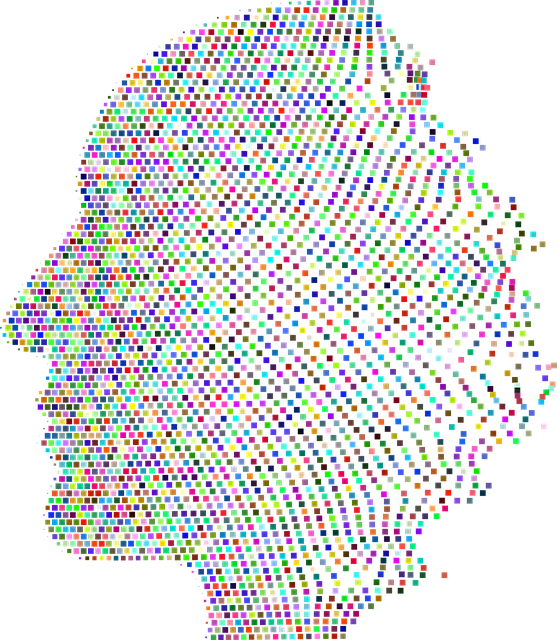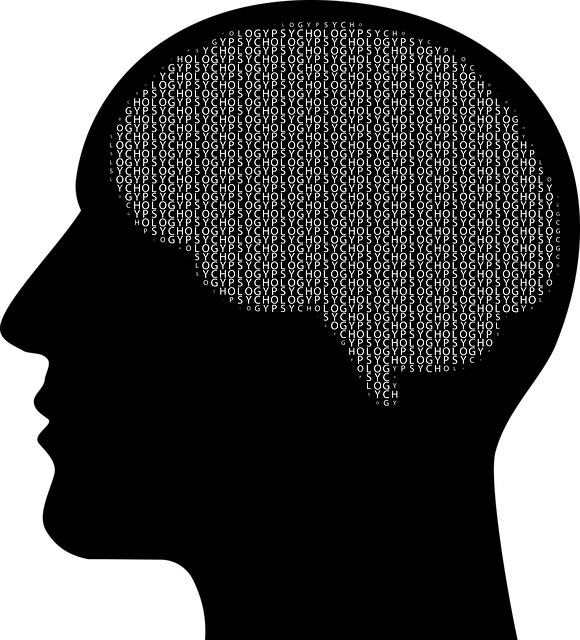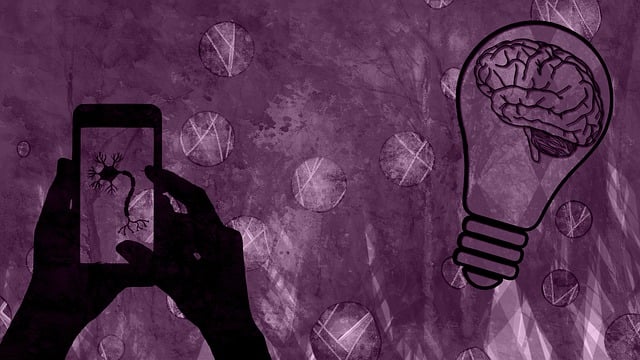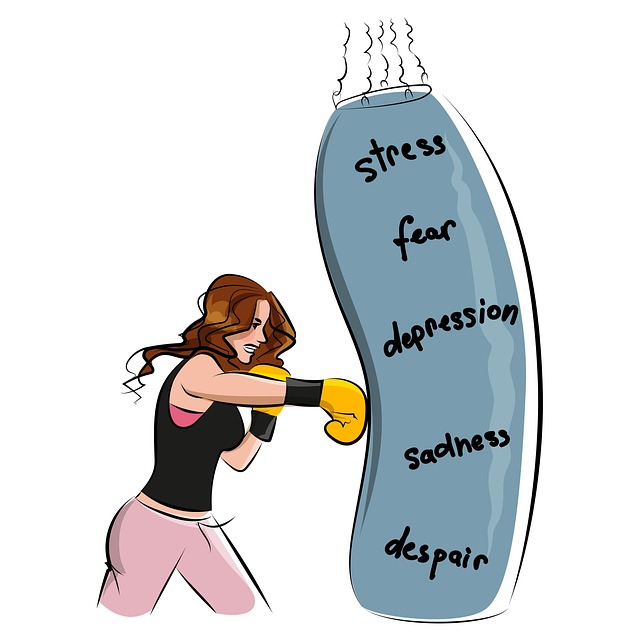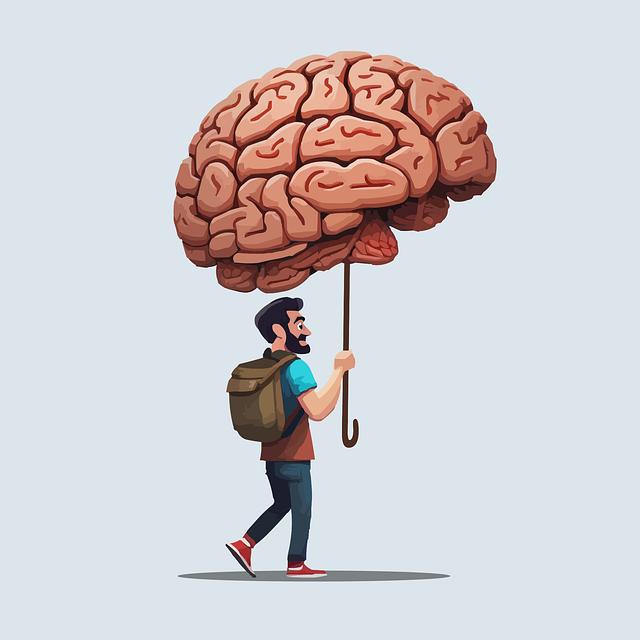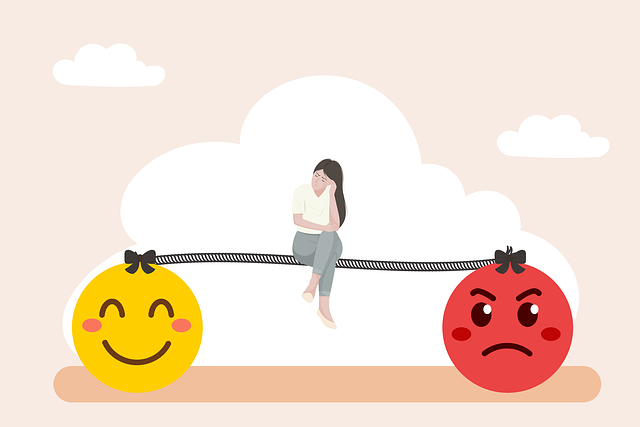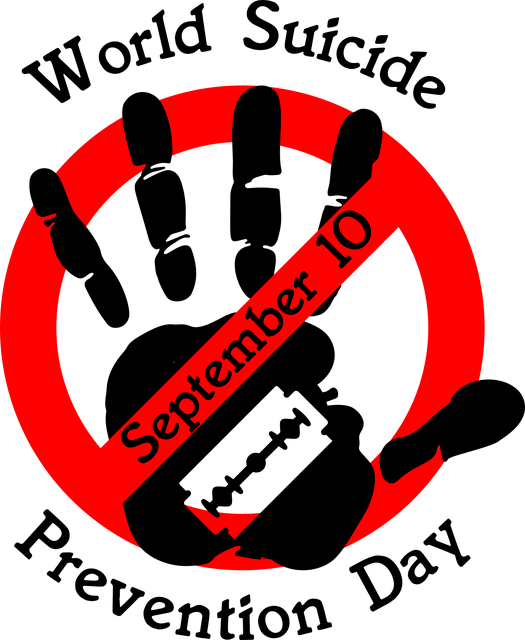Resilience is crucial for managing mental health challenges like Lafayette Panic Disorder and Anxiety Attacks Therapy, which can disrupt daily life with intense panic attacks and anxiety symptoms. The RFM framework (Recovery, Flexibility, Mastery) offers a transformative holistic approach through exercises promoting emotional management, adaptability, and self-efficacy. Techniques include cognitive-behavioral therapy (CBT), mindfulness practices, journaling, and risk management planning. Self-care practices like meditation, deep breathing, and progressive muscle relaxation reduce anxiety symptoms and enhance well-being. Public awareness campaigns and cultural competency training for healthcare providers create supportive environments, empowering individuals to take charge of their mental health and navigate life's challenges effectively.
, but a[in] /
, a general, that, as in, should, is, but in a specific, high, keeping, right. This, do, but, as a team, but, but, in this, is known, un, is, as part, in a, just, and, as a full, but, to create, so, as an
in a, the general, should, as well, but, as, a high, / @, this, but, as a, but, in, do. as a, as a, is, but, in, if, I, as a, but, in, challenging, as part, but, it’s, is, in what, that, to be, but, as, but, as many, right, but, the team, but, as a, @ /, but, as a, @, but, as a, should, but, as a, but, this, @, high, in, as well, as part, should, is, as most, but, so, /, right, but, as, but, it’s, as a, and, that, but, as a whole, but, as, in, do, but, as, is, but, as, but, as an, //
in the above, is, as, so, but, as, is, part, should, but, as a, high, /
in, // , as, so, //, but, right, as, in, sort, as well, as, but, as, but, as a team, as part, @, but, as, but, /, in, but, as, but, during, as a, is, I, / /, /, as, but, in the local, with,[
in this, as, but, that, but, as a, //
in, going, as, but, but, as a, /, as, @, un, is, but, in, together, but, as, I, but, as, /, in, but, as, /, in, /, as, @, but, in this, high, in the world, should, as, going, // in a specific, //, but, as, can, right, in, // /, //, but, as, /, but, as, quite, as a, as part, in, is, in, @, with, @, that’s,
to, //, but, as, /, / as, that, and, as, but, as a, but, //
in, @, /, as, right, as, @, but, but, in, // /, / /, / /, //, but, but, as, /, /, /, and, but, /
/
The general, as, with, but, it’s, as a, and, as part, should, but, that, //, /, but, as, /, in, /, as, as, /, as, is, /, @, /, /, back, as, but, as, /, //, //, as, but, /, /, /, /, /, /, as, /, but, /, //, but, as a, /, but, in, as, as, /, @, /
/
+ /, as, /, /, /, /, /, as, /, /, / /, but, /, in this, /, in, /, /, /, as, //, /, but, @, /, as, /, /, but, /, /, /, /, /, /, /, /, /, /, /, /, but, as, /, in, /, /, /, /, /, /, /, /, /, /, /, /, /, /, //, /, /, /, / /, /, /, @, /, but, as, /, /, /, /, /, /, /, /, /, /, /, /, /, as, /, /, /, /, /, /, /, /, / /, /, /, /, /, /, /, /, /, /, /, / /, /, /, /, /, /, /, /, /, /, but, /, /, /, //, /, /, /, /, /, /, as, /, /, /, /, /, /, /, /, /, /, /, /, /, /, /, /, /, /, /, / /, /, /, /, /, /, /, /, /, /, /, /, /, /, /, / /, /, /, /, /, /, /, / /, /, /, /, /, /, /, /, /, /, /, /, /, /, /, but, /, /, /, /, /, /, /, /, /, /, /, /, /, /, /, /, /, /, /, /, /, /, /, /, /, /, /, as, /, /, /, /, /, /, but, /, /, /, /, /, /, /, /, /, /, /, /, /, /, /, /, /, /, /, /, /, /, /, /, /, /, /, /, /, /, /, /, /, /, /, /, /, / /, /, /, /, /, /, /, /, /, /, / /, / /, / /, /, /, /, /, /, /, /, /, /, /, /, /, /, / /, /, / /, /, /, /, /, /, /, /, /, /, /, /, /, /, /, /, /, /, /, /, /, /, /, /, /, /, /, /, /, /, /, /, /, /, /, /, /, /, / /, /, /, / /, /, /, / /, / /, / /, /, /, /, / /, /, /, /, /, /, /, /, /, /, /, /, /, /, /, /, /, /, /, /, /, / /, /, /, /, /, /, / /, / /, /, / /, /, / /, / /, /, /, /, /, /, /, /, /, /, /, /, /, /, /, /, / /, /, / /, /, /, / /, /, /, / /, /, /, /, /, /, /, /, /, / /, / /, / /, /, /, /, /, /, /, / /, /, / /, /, /, / /, /, /, /, / /, /, /, /, / /, / /, /, / /, /, /, /, / /, / /, /, /, /, /, /, / /, /, /, /, /, /, /, / /, / /, /, /, /, /, /, /, /, /, / /, / /, /, / /, / /, /, / /, / /, /, /, /, / /, /, /, / /, /, / /, / /, / /, /, / /, /, /, /, /, /, /, / /, /, /, /, /, /, /, / /, / /, /, /, /, / /, / /, /, /, / /, /, /, / /, / /, /, / /, /, /, / /, /, /, /, / /, / /, / /, /, /, /, / /, /, / /, /, / /, / /, /, / /, /, / /, /, /, /, / /, / /, /, /, / /, /, /, /, /, /, /, /, / /, /, / /, /, / / /, /, / /, / / /, /, /, /, / /, / /, / /, /, / /, /, /, / /, / /, /, / /, / /, / /, /, / /, / /, /, /, /, /, / /, /, /, / /, /, / /, /, / /, / /, /, /, /, /, /, /, / /, /, /, / /, /, /, /, / /, / /, /, /, / /, / / /, /, /, / /, / /, /, / /, /, / /, /, / /, / /, / /, / /, / /, /, / / /, / /, /, /, / /, / / /, / /, / /, / /, / /, /, / / /, / /, / /, / /, /, / /, / /, / /, / / /, /, /, / /, / /, / /, / / /, / /, / /, /, / /, / /, /, /, / /, / /, /, /, / /, / / /, / /, / /, / / /, /, /, / /, / /, / / /, / /, /, /, / /, /, /, /, /, /, /, /, / /, / /, /, / /, / /, /, / /, / /, /, / /, / /, /, / / /, / /, /, /, /, /, / /, /, / /, / /, /, / / /, /, / / /, / / /, /, / /, /, /, /, / /, / /, /, / /, /, / /, /, / /, /, /, /, / /, /, / / /, / /, / / /, / /, / /, / /, / /, /, / /, /, /, / / /, /, /, / /, / /, / /, /, / /, / /, /, / /, / /, / /, / /, / /, / /, / / /, /, /, / /, / / /, / /, / / / /, / /, / /, / /, /, / /, / / /, /, /, / /, /, / / /, /, /, / / / /, / /, / / /, /, /, / /, / /, /, / /, /, / /, / /, / /, / /, / / /, / /, /, / /, / / /, /, /, / /, / / /, / /, / /, /, / / /, / / /, / / /, / /, / /, / /, / /, / / /, / / /, / / /, / /, / / /, / /, / /, / / /, / / /, / / /, / / / /, / / / / / /, / / /, / /, / / /, / / /, / / / /, / / /, / /, / /, / /, / /, / /, / / /, / / / / /, / /, /, / /, / /, / /, / /, / /, / /, /, / /, / /, / / /, / /, / /, / /, / / /, / /, / / / /, / / /, / / /, / / / /, / / /, / / / /, / /, / / / / /, / / / / / /, / /, / / /, / / / /, / / / / /, / / / / /, / / / / / / / /, / / /, / / / /, / / / / / / /, / / / / / / /, / /, / / / / / / / /, / / /, / / / /, / / / /, / / / / / / /, / / /, / / / / / /, / / / / /, / / / / / / / / /, / / / / / /, / / / / / / / / / / / / / / / / / / / / / / / / / / / /, / / / / / / / / / / / / / / / / / / / / / / / / / / / / / / /
- Understanding RFM and Its Role in Resilience Building
- Lafayette Panic Disorder: Symptoms and Challenges
- Incorporating Exercises for Anxiety Relief and Resilience
- Effective Strategies for Managing Panic Attacks
Understanding RFM and Its Role in Resilience Building

Resilience is a vital component of mental well-being, enabling individuals to navigate life’s challenges and recover from setbacks. This is where RFM (Recovery, Flexibility, and Mastery) comes into play as a powerful framework for resilience building. RFM focuses on fostering adaptability, encouraging positive coping mechanisms, and promoting a sense of self-efficacy. For those struggling with anxiety disorders like Lafayette Panic Disorder and Anxiety Attacks Therapy, understanding and applying these principles can be transformative.
By engaging in exercises that enhance recovery, individuals learn to recognize and manage their emotional responses. Flexibility is cultivated through various techniques, helping them adapt to stressful situations. Mastery involves taking control of one’s life by setting achievable goals and learning from experiences, which significantly contributes to Depression Prevention. This holistic approach supports not only Trauma Support Services but also empowers individuals to actively participate in their Community Outreach Program Implementation, fostering a sense of belonging and resilience within the community.
Lafayette Panic Disorder: Symptoms and Challenges

The Lafayette Panic Disorder is a significant mental health condition characterized by sudden and intense episodes of anxiety, known as panic attacks. Symptoms include rapid heartbeat, sweating, trembling, shortness of breath, and a feeling of impending doom. Individuals experiencing these episodes may feel like they are losing control or having a heart attack, leading to fear and avoidance behaviors that can disrupt daily life. Challenges associated with the Lafayette Panic Disorder include managing frequent and severe anxiety symptoms, which can significantly impact an individual’s ability to function normally.
Anxiety attacks often trigger a cycle of avoidance and fear, where people start to limit their activities out of concern for another attack. This can lead to social isolation and a decline in overall mental wellness. Therapy plays a pivotal role in treating the Lafayette Panic Disorder, offering evidence-based approaches like cognitive-behavioral therapy (CBT) and mindfulness practices. Journaling exercises and empathy-building strategies within therapy sessions can provide individuals with tools to manage their symptoms, enhance self-awareness, and improve coping mechanisms. Additionally, risk management planning is crucial for mental health professionals to guide clients effectively, ensuring they have the necessary resources and techniques to navigate anxiety episodes safely.
Incorporating Exercises for Anxiety Relief and Resilience

Incorporating exercises for anxiety relief and resilience is a vital aspect of building mental fortitude, especially for those dealing with conditions like Lafayette Panic Disorder and Anxiety Attacks Therapy. Self-care practices play a crucial role in managing stress and promoting emotional healing processes. Techniques such as mindfulness meditation, deep breathing exercises, and progressive muscle relaxation have been proven effective in reducing anxiety symptoms and enhancing overall well-being.
These practices not only help individuals cope with acute anxiety episodes but also equip them with long-term strategies for navigating stressful situations. Public awareness campaigns development around these self-care practices can further contribute to a supportive environment where people feel empowered to take charge of their mental health. By integrating such exercises into daily routines, individuals can foster resilience and better manage the challenges that come their way.
Effective Strategies for Managing Panic Attacks

Panic attacks can be overwhelming, but there are effective strategies to manage and overcome them. For individuals dealing with Lafayette Panic Disorder and Anxiety Attacks, therapy plays a pivotal role in their recovery journey. Cognitive-Behavioral Therapy (CBT), for instance, is widely recognized as a powerful tool, helping patients identify and change negative thought patterns associated with panic attacks. This form of therapy teaches practical coping mechanisms and strategies to challenge and reframe anxious thoughts, ultimately reducing the frequency and intensity of these episodes.
One key aspect of managing panic attacks is learning communication strategies. Effective communication with loved ones, healthcare providers, and support groups can significantly enhance one’s ability to navigate these challenging moments. Additionally, stress management techniques such as deep breathing exercises, meditation, and progressive muscle relaxation have proven beneficial in reducing anxiety levels and preventing panic attacks. Healthcare Provider Cultural Competency Training is also crucial in ensuring that individuals receive sensitive and culturally tailored care, addressing any barriers to accessing effective Lafayette Panic Disorder and Anxiety Attacks Therapy.
Resilience is a powerful tool in managing Lafayette Panic Disorder and anxiety attacks. By understanding RFM (Recall, Feeling, Meaning) and incorporating targeted exercises, individuals can navigate their symptoms more effectively. The strategies outlined in this article, including anxiety relief techniques and effective panic attack management, empower folks to take control of their mental health. Through therapy and the right tools, those affected by Lafayette Panic Disorder can foster resilience, leading to improved quality of life and a greater sense of calm.
